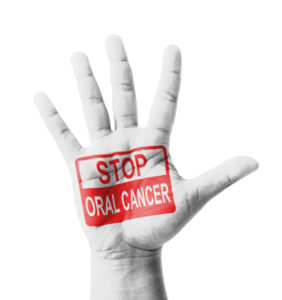Dental emergencies can strike when you least expect them. Whether it’s a severe toothache, infection, or sudden trauma, these situations often require immediate attention to relieve pain and prevent further complications. One term you may hear in a dental emergency is emergency palliative treatment.
But what exactly is emergency palliative treatment, and how does it work? This blog Najmi Dental will walk you through the concept, explain when it’s needed, and help you understand what to expect from this type of urgent dental care.
What Is Emergency Palliative Treatment?
Emergency palliative treatment is a temporary measure used to alleviate pain or discomfort until a more definitive treatment can be provided. The word “palliative” refers to providing relief without necessarily addressing the underlying problem completely.
Emergency palliative treatment does not aim to fix the problem permanently but rather serves as a temporary solution to get you through the crisis. This might involve addressing severe pain, controlling bleeding, or managing an infection.
When Is Emergency Palliative Treatment Needed?
Emergency palliative treatment is typically required when a patient is experiencing severe pain or discomfort that cannot wait for a standard dental appointment. Some common situations where this type of care may be necessary include:
1. Severe Toothache
A sudden, severe toothache is one of the most common reasons for seeking emergency palliative treatment. Tooth pain can be caused by a variety of issues, including decay, infection, or trauma to the tooth. Emergency palliative treatment focuses on providing immediate relief from the pain, whether through medications, temporary fillings, or other short-term measures.
2. Dental Abscess
An abscess is a pocket of pus caused by a bacterial infection, and it can be extremely painful. Left untreated, it can lead to serious complications, including the spread of infection to other parts of the body. Emergency palliative care for a dental abscess may involve draining the abscess and prescribing antibiotics to control the infection. This provides temporary relief until a more comprehensive treatment plan, such as a root canal or tooth extraction, can be implemented.
3. Broken or Chipped Tooth
If a tooth is broken or chipped due to trauma, it may cause pain or expose the inner layers of the tooth to infection. Emergency palliative treatment can help protect the tooth and reduce discomfort. Your dentist may apply a temporary filling or bonding material to cover the exposed area until a more permanent solution, such as a crown or veneer, can be arranged.
4. Swollen or Bleeding Gums
Sometimes, gum infections or injuries can lead to swollen, painful, or bleeding gums. Emergency palliative care in these situations may involve cleaning the affected area, prescribing medications to reduce swelling and pain, and providing advice on home care to prevent further irritation.
5. Lost or Dislodged Fillings or Crowns
Losing a filling or crown can leave your tooth vulnerable to decay and sensitivity. Emergency palliative treatment can involve placing a temporary filling or crown to protect the tooth and relieve discomfort until you can return for a permanent replacement.
What to Expect During Emergency Palliative Treatment
Emergency palliative dental treatment is typically a quick, temporary solution that provides relief from pain or discomfort until a more definitive treatment can be performed. Here’s what you can generally expect when you receive this type of care:
1. Pain Relief
The first priority in emergency palliative care is relieving your pain. Your dentist may administer local anaesthesia to numb the affected area, or they may recommend over-the-counter or prescription pain medications to manage your discomfort. In cases of severe infection or abscess, antibiotics may be prescribed to reduce swelling and control the infection.
2. Temporary Measures
Depending on the nature of the emergency, your dentist may apply temporary fillings, dressings, or dental sealants to protect the damaged tooth or gum tissue. These temporary solutions are designed to stabilise your condition and prevent further damage while you wait for a more permanent treatment.
3. Follow-Up Plan
Since emergency palliative treatment is temporary, you will likely need to schedule a follow-up appointment for a more permanent solution. For example, if you have an abscess, the palliative treatment may include draining the infection, but you’ll need to return for a root canal or extraction to fully resolve the problem. Similarly, a broken tooth may require a permanent crown or bonding after the initial pain has been managed.
Common Types of Emergency Palliative Dental Treatments
Emergency palliative care can take many forms, depending on the specific problem you’re experiencing. Here are some common examples of treatments used to provide temporary relief during a dental emergency:
- Temporary Fillings: If you have a cavity or broken tooth, a temporary filling can be placed to protect the tooth and reduce sensitivity until a permanent restoration can be performed.
- Dental Dressing: In cases of gum infection or injury, a dental dressing may be applied to cover and protect the affected area, helping to reduce pain and prevent further irritation.
- Drainage of Abscess: If you have a dental abscess, your dentist may drain the infected area to relieve pressure and reduce pain. Antibiotics may also be prescribed to control the infection.
- Pain Medication: Over-the-counter or prescription painkillers may be recommended to manage your discomfort until a more definitive treatment can be provided.
When to Seek Emergency Palliative Treatment
It can be difficult to know when to seek emergency dental care, especially if the problem arises outside of regular office hours. Here are some signs that you may need to seek emergency palliative treatment right away:
- Severe, persistent tooth pain that doesn’t go away with painkillers
- Swelling in the face or jaw, which could indicate an infection
- Bleeding from the gums or teeth that won’t stop
- Trauma to the teeth or gums, such as a broken or knocked-out tooth
- Sensitivity or pain after losing a filling or crown
If you experience any of these symptoms, it’s important to contact najmi dental or visit najmi dental for emergency as soon as possible.
Preventing Dental Emergencies
While some dental emergencies are unavoidable, there are steps you can take to reduce your risk of needing emergency palliative care. Here are a few tips to keep your teeth and gums healthy and prevent unexpected dental problems:
- Regular dental check-ups: Visiting your dentist regularly for cleanings and exams can help catch potential problems early, before they become emergencies.
- Good oral hygiene: Brushing twice a day, flossing daily, and using mouthwash can help prevent tooth decay, gum disease, and infections.
- Protective gear: If you play contact sports or grind your teeth at night, wear a mouthguard to protect your teeth from damage.
- Healthy diet: Avoid sugary foods and drinks that can contribute to cavities and tooth decay.
By taking care of your oral health, you can reduce the likelihood of needing emergency palliative treatment.
Conclusion
Emergency palliative dental treatment is an essential service for providing immediate relief from pain or discomfort in urgent dental situations. Whether you’re dealing with a severe toothache, abscess, or broken tooth, this type of care can stabilise your condition and give you the time you need to seek more permanent treatment.
If you ever find yourself in a dental emergency, it’s important to seek help right away to prevent complications. Contact Najmi Dental or visit an emergency dental clinic to receive the care you need and ensure your oral health stays on track.


